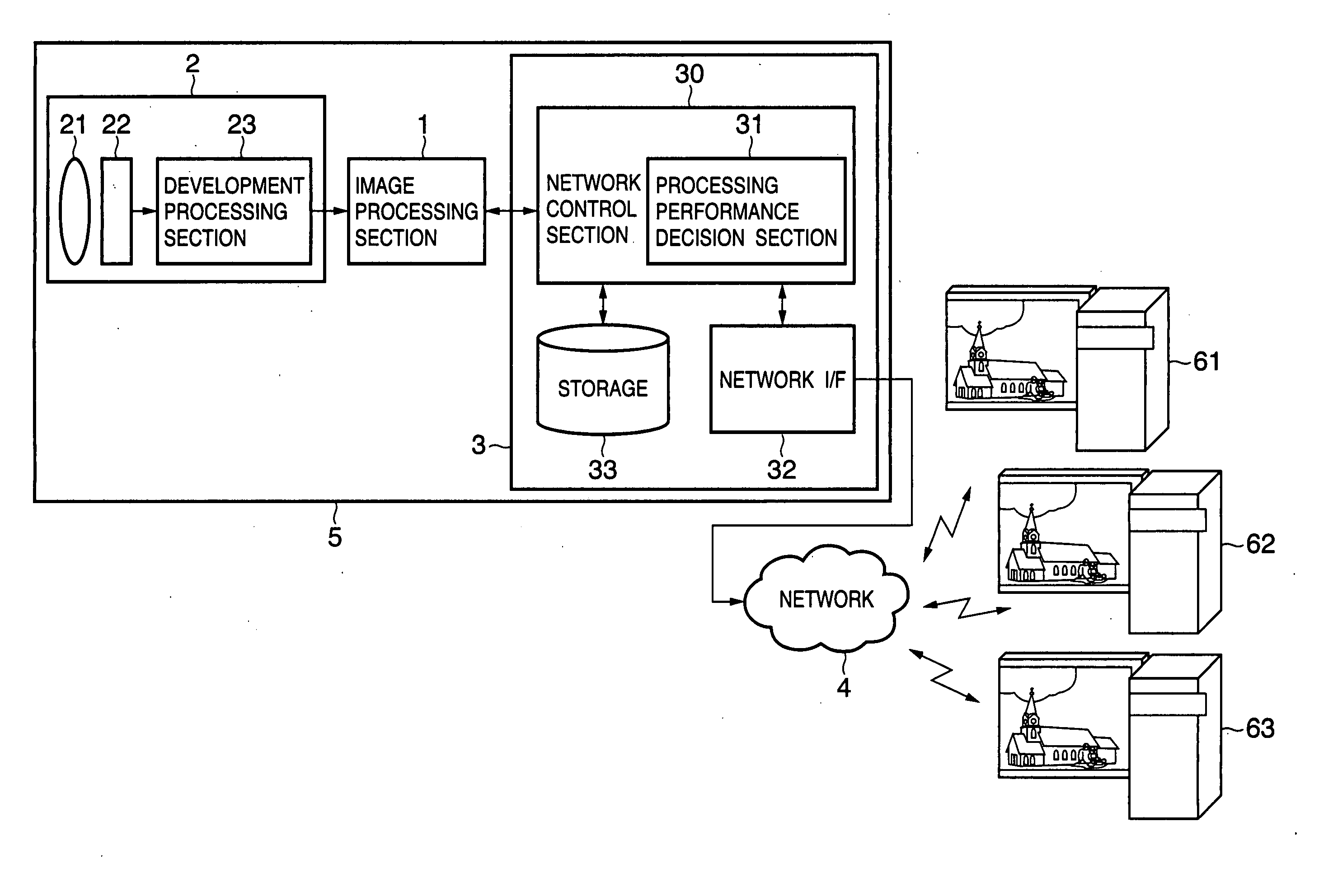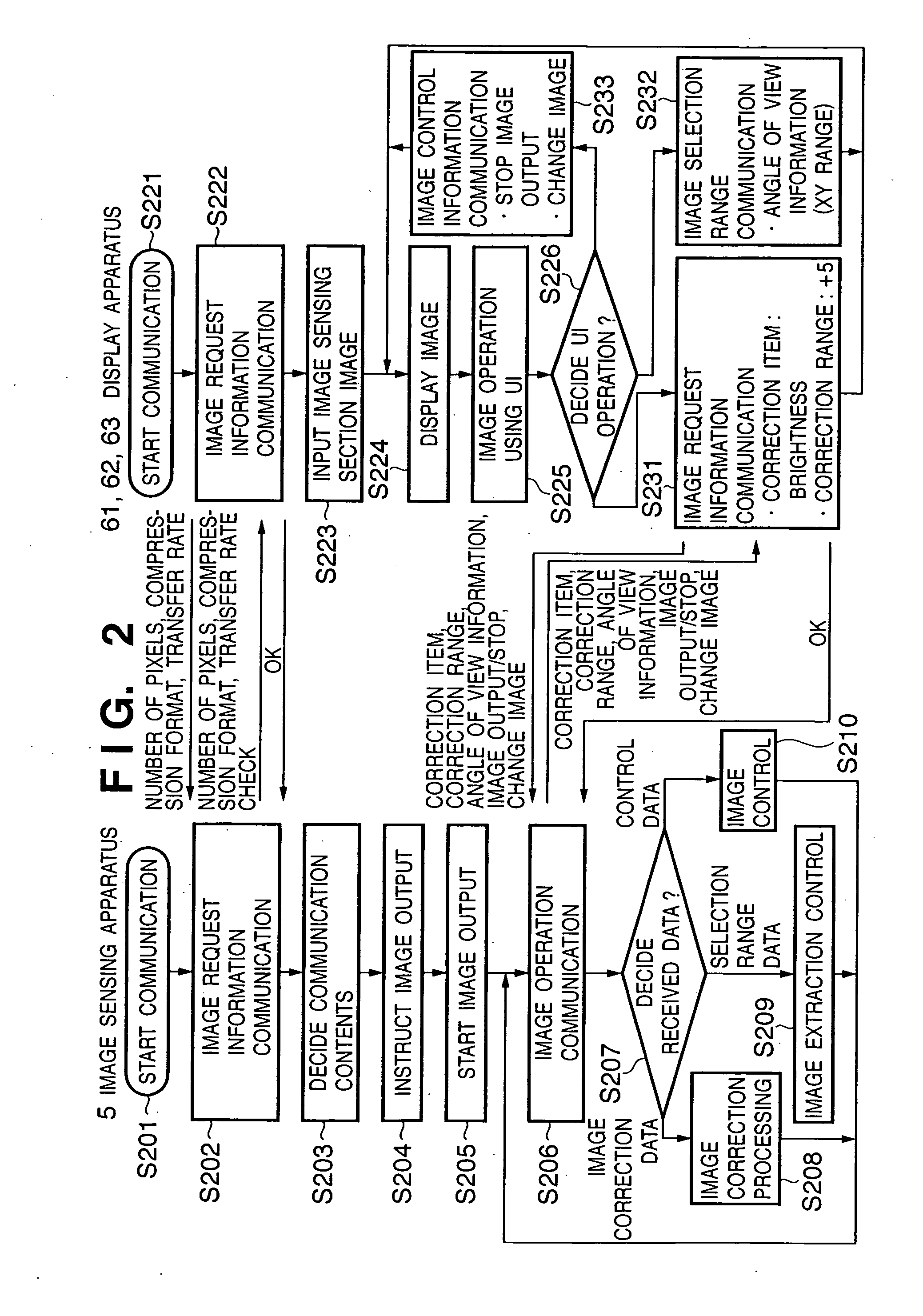Data processing apparatus and control method thereof
a data processing and control method technology, applied in the field of video data processing, can solve the problems of limited number of processing units that can be mounted therein, content that can only be serviced, and structure cannot meet a request, so as to achieve the effect of increasing the size of the apparatus
- Summary
- Abstract
- Description
- Claims
- Application Information
AI Technical Summary
Benefits of technology
Problems solved by technology
Method used
Image
Examples
first embodiment
[0037]FIG. 1 is a block diagram showing the structure of an image sensing apparatus according to a First Embodiment. In FIG. 1, an image sensing apparatus 5 is roughly divided into three components; an image processing section 1, an image sensing section 2 and a communication section 3. The image sensing section 2 includes a lens 21 to which image is input, a photoelectric conversion sensor (hereinafter referred to as “sensor”) 22 which converts the light condensed by the lens 21 to an electric signal and a development processing section 23 which develops the signal obtained from the sensor 22. The development processing section 23 carries out luminance / color signal separation processing, noise reduction processing, reference γ correction processing and color correction / color signal suppression processing on the data (data of each of RGB elements in the case of a primary color filter) output from the sensor 22. Final output data of the image data output from the development processi...
second embodiment
[0074] The First Embodiment has explained the processing in the case where the same image is subjected to different image corrections for three connection destinations simultaneously. Furthermore, the First Embodiment has explained the processing of applying one type of image processing to the respective output destinations and outputting the processing results, but it may be necessary to apply a plurality of types of image processing depending on the request from the display apparatus at the output destination. Example of this are luminance correction+filter processing, luminance correction+extraction at a desired angle of view, etc. The Second Embodiment will explain a structure for realizing such composite processing.
[0075] As in the case of the First Embodiment, an image sensing apparatus 5 and a plurality of display apparatuses are connected through a network (FIG. 1). FIG. 6 illustrates operations of various processing sections of an image processing section 1 according to th...
third embodiment
[0088] In the First Embodiment and Second Embodiment, the image processing section 1 has the inner structure as shown in FIG. 4 in which the respective image correction processes are arranged in parallel so as to distribute image data to correction processing specified by the demultiplexer section. However, when such a structure is adopted, the data flow control by the control sequencer section 400 becomes complicated and the processing time possibly increases.
[0089] In order to solve the above described problem, a Third Embodiment will describe an example in which the image correction execution section 413 is modified. As shown in FIG. 8, according to the Third Embodiment, the respective processing sections in an image correction execution section 1001 are connected in series like a pipeline. A flag processing section 1010 for adding a flag indicating whether each correction process should be carried out or not and a parameter indicating an amount of each of various types of corre...
PUM
 Login to View More
Login to View More Abstract
Description
Claims
Application Information
 Login to View More
Login to View More - R&D
- Intellectual Property
- Life Sciences
- Materials
- Tech Scout
- Unparalleled Data Quality
- Higher Quality Content
- 60% Fewer Hallucinations
Browse by: Latest US Patents, China's latest patents, Technical Efficacy Thesaurus, Application Domain, Technology Topic, Popular Technical Reports.
© 2025 PatSnap. All rights reserved.Legal|Privacy policy|Modern Slavery Act Transparency Statement|Sitemap|About US| Contact US: help@patsnap.com



